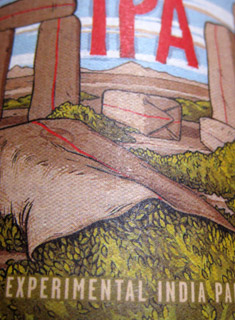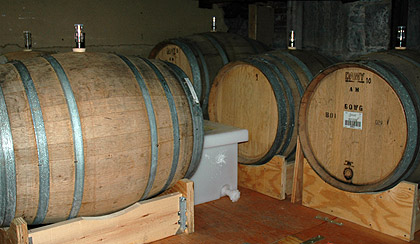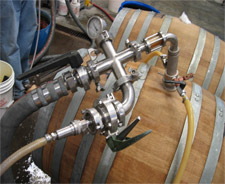My, time flies, and faster the older you get. Back in 1997, my wife, Daria Labinsky, and I wrote a story that appeared in All About Beer magazine in the early days of 1998. It was called “The Class of ’88” and examined several brewpubs that opened ten years before and their influence.
Now Deschutes Brewery, one of those featured in 1998, has announced it will collaborate with four other breweries that opened in 1988 to create commemorative beers to celebrate their shared 25th anniversary.
So it’s been 15 years since we wrote that story about places that were 10 years old. (That’s what I mean about time.) It may be a little dated, but I added it to the archives here. And not only because it provides an excuse to repeat a great quote from the late Greg Noonan:
“When the homebrewers stop entering the profession, and the backyard breweries are squeezed out, then it will become stagnant. You gotta keep getting the guys who say, ‘Cool, I can sell the beer I make. I can do it.’ ”
You may not know you miss Greg Noonan, but you do.
Anyway, the skinny for the Deschutes press release:
Brewery Partners: North Coast Brewing Company (Ft. Bragg, CA) & Rogue Ales (Newport, OR)
Beer Style: Barley Wine
Planned Release Date: March 2013Story: In the same year these breweries were born, renowned beer connoisseur Fred Eckhardt published The Essentials of Beer Style which included a barley wine style guideline which will provide the basis for this collaboration. All three versions of the barley wines that will result from this unique collaboration will be packaged in 22-ounce and 750 ml bottles, plus draft.
Brewery Partner: Great Lakes Brewing Company (Cleveland, OH)
Beer Style: Smoked Imperial Porter
Planned Release Date: May 2013Story: Building on a history of great porters – Great Lakes Brewing Company’s Edmund Fitzgerald and Deschutes Brewery’s Black Butte Porter – this Smoked Imperial Porter promises to be exceptional. Both beer versions will be available for a limited time in 22-ounce bottles and draft.
Brewery Partner: Goose Island Beer Company (Chicago, IL)
Beer Style: Belgian-Style Strong Golden Ale
Planned Release Date: Q4 2013Story: Brewers and owners are still working out the details on this beer, which they plan to brew with Riesling juice and Pinot Noir grapes. It will be aged in barrels that previously held Muscat wine in them for 10 years. Again, each brewery will produce its own version of the brew in bottles and draft.
I’ll buy those beers.
But — attn. anybody at Wynkoop Brewing (Marty Jones, Andy Brown, and even Colorado governor John Hickenlooper) or Vermont Pub & Brewery (and that could include you, John Kimmich or Peter Egleston) — the commemorative 25th anniversary beer I want to drink in 2013 is the one that Russell Schehrer and Greg Noonan could have, should have, would have brewed together.
 Both the beer and the details herein.
Both the beer and the details herein.
 To produce 5,000 (beer) barrels of oaked ale to use in blending brewers at Firestone — these are people at work, because this is not a matter of hitting a switch and watching beer flow magically from one container to another — must rack beer into wooden barrels well over 2,000 times, then rack it back into steel after a week.
To produce 5,000 (beer) barrels of oaked ale to use in blending brewers at Firestone — these are people at work, because this is not a matter of hitting a switch and watching beer flow magically from one container to another — must rack beer into wooden barrels well over 2,000 times, then rack it back into steel after a week.